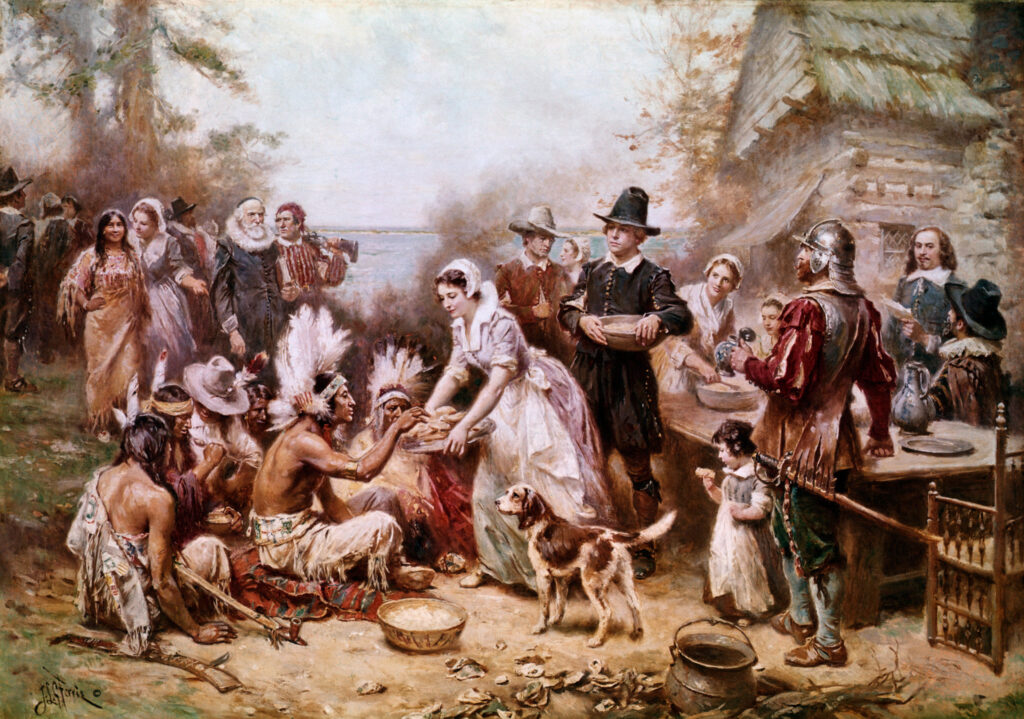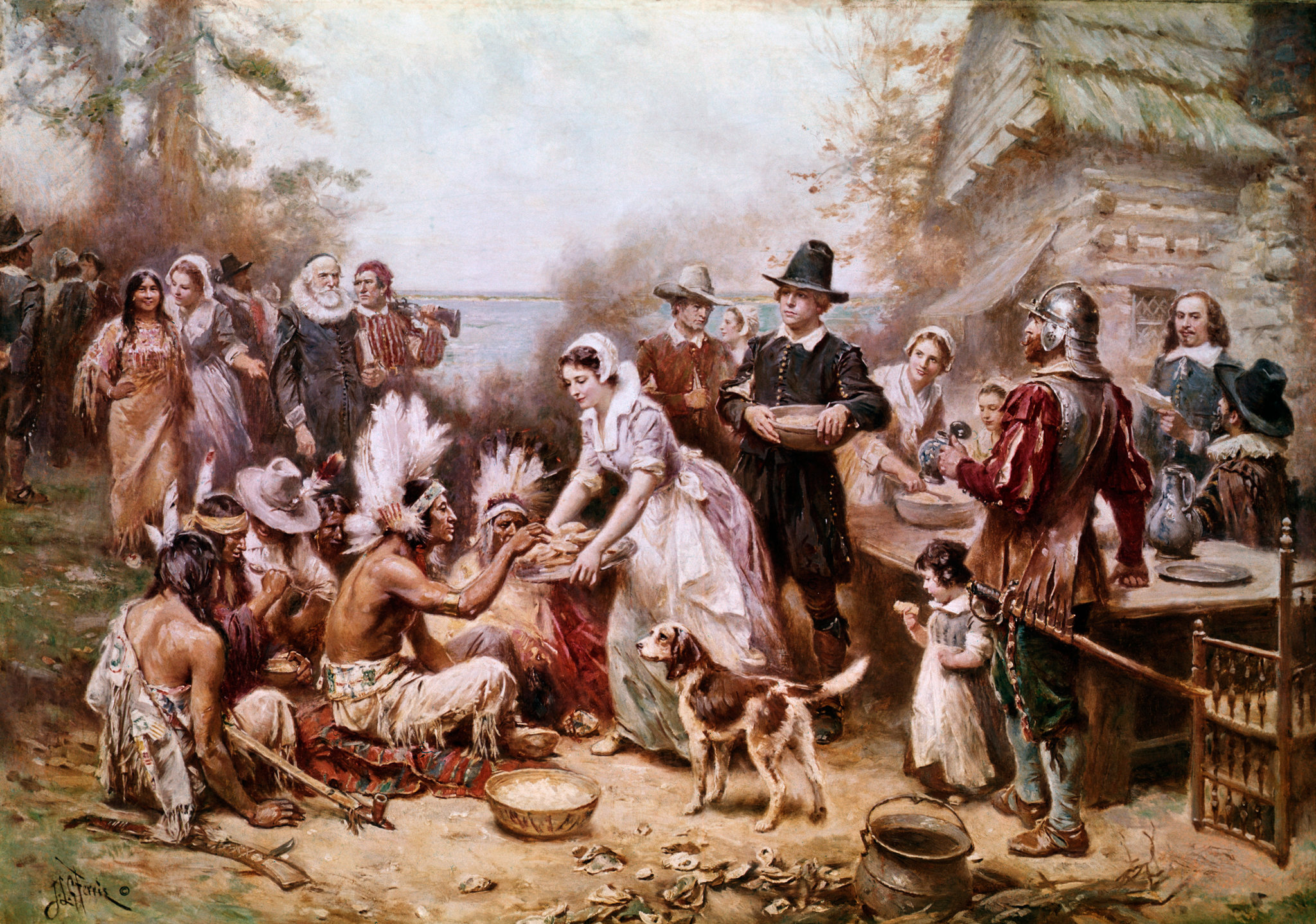Synopsis: Thanksgiving– Many Native Americans and Alaska Natives have a delicate relationship with the day, and their festivities are unique.

Thanksgiving: Why do some people object to the holiday’s mythology?
According to polls, Thanksgiving is America‘s second favourite holiday after Christmas. However, many Native Americans and Alaska Natives have a delicate relationship with the day, and their festivities are unique.
Kisha James will eat her last meal for nearly 24 hours on Thanksgiving Eve, while many Americans prepare for a huge holiday meal.
She will not be basting a turkey, making macaroni and cheese, or sprinkling sugar on pies. Ms James will be distraught.
For her, the day is a bitter reminder of a dark era in American history; a symbol of broken promises, a story that tends to gloss over the unpleasant aspects of colonisation.
“It’s infuriating. It’s heartbreaking “Ms James, a Wampanoag tribal member living in Massachusetts, remarked “Some years it irritates me.”
“We have no objections to people sitting down with their families and giving thanks,” Ms James added. “What we take issue with is the Thanksgiving mythology.”
The Thanksgiving holiday originated with a harvest feast held in 1621 between the Wampanoag, a Native tribe who had long occupied the territory, and the newly landed English colonists in America.
The meeting is often perceived as a celebration of the two organisations’ cooperation, but it ignores the ways in which those ties were severed.
Foreign-born diseases brought from Europe killed many Native Americans in the years after the harvest feast.

Others died in battles with English settlers who wanted to take over their land. Between 1819 and 1969, the US government attempted to forcibly integrate pupils at approximately 400 federal boarding schools.
According to Northwestern University’s Institute for Policy Research, one in every three Native Americans is currently poor, with a median annual income of $23,000 (£19,000).
‘Whose land? Our land’
According to Ms James, the myth ignores these truths.
Instead of calling the holiday Thanksgiving, some, like as Ms Smith, observe November 24 as National Day of Mourning. Since 1970, it has been observed in Plymouth, Massachusetts.
The day begins with an opening prayer ceremony at a historic site called Cole’s Hill, a cemetery that contains the graves of some of America’s earliest settlers.

Following that, there are speeches and a march through the streets with the shout, “Whose land is it? Our country “It is possible to hear.
Others from across the country have gathered at Alcatraz Island in San Francisco every November since 1975.
They hold an event known as the Indigenous Peoples Thanksgiving Sunrise Gathering. Some call it “Un-Thanksgiving Day.”
Historians credit the rise in Native American activism in the 1970s to momentum generated by Black Americans during the civil rights movement the decade before.
These ceremonies are intended to pay tribute to the Native Americans who lived on the site before European settlers arrived.
They also bring to light what University of Arizona anthropology professor Edward Jolie refers to as “historical traumas,” such as what happened to Native Americans after President Andrew Jackson signed the Indian Removal Act into law in 1830.
Approximately 100,000 Native Americans were forcibly relocated from the southeast region of the United States to areas west of the Mississippi River during the 1830s. It is estimated that approximately 15,000 people died on the Trail of Tears.
Mr Jolie’s grandmother, born in 1912, heard firsthand memories of the Trail of Tears from an elderly relative who survived it. Mr Jolie, a descendant of the Oglala Lakota and Hodulgee Muscogee tribes, was later told stories of “death and famine.”
“I believe a lot of people ignore or don’t recognise how raw, very real, and ever present these types of historical traumas are for a lot of Native peoples,” he added.
Mr. Jolie was also told firsthand anecdotes by the same grandmother who later related her experiences as a student at a “American Indian” boarding school with him.
Mr. Jolie claimed her stories contained “a lot of extremely terrible things.”
The US Department of the Interior issued a study in May that described the old federal boarding schools as “rampant” with physical and sexual abuse, overcrowding, malnourishment, and sickness, all of which were “well-documented.”
The research also documented the deaths of at least 500 Native children, a figure that is expected to climb as the US government investigates the institutions’ “troubled history.”

Mr. Jolie claimed her stories contained “a lot of extremely terrible things.”
The US Department of the Interior issued a study in May that described the old federal boarding schools as “rampant” with physical and sexual abuse, overcrowding, malnourishment, and sickness, all of which were “well-documented.”
The research also documented the deaths of at least 500 Native children, a figure that is expected to climb as the US government investigates the institutions’ “troubled history.”
Read Also:
For more, visit Zesacentral!
